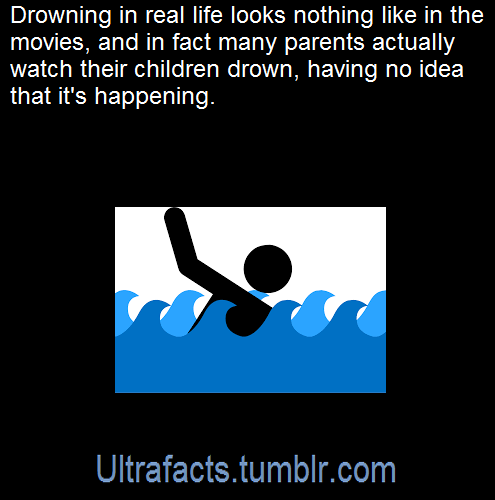A Research Tip From A Friendly Neighborhood Librarian!
A research tip from a friendly neighborhood librarian!
I want to introduce you to the wonderful world of subject librarians and Libguides.
I’m sure it’s common knowledge that scholars and writers have academic specialties. The same is true for subject librarians! Most libraries use a tool called Libguides to amass and describe resources on a given topic, course, work, person, etc. (I use them for everything. All hail Libguides.) These resources can include: print and ebooks, databases, journals, full-text collections, films/video, leading scholars, data visualizations, recommended search terms, archival collections, digital collections, reliable web resources, oral histories, and professional organizations.
So, consider that somewhere out there in the world, there may be a librarian with a subject specialty on the topic you’re writing on, and this librarian may have made a libguide for it.
Are you writing about vampires?
Duquesne University has a guide on Dracula
University of Northern Iowa: Monsters and Religion
Fontbonne University has a particularly good one on Monsters, Ghosts, and Mysteries
Washington University in St. Louis: a course guide on Monsters and Strangeness
How about poverty?
Michigan State: Poverty and Inequality with great recommended terms and links to datasets
Notre Dame: a multimedia guide on Poverty Studies.
Do you need particular details about how medicine or hygiene was practiced in early 20th century America?
UNC Chapel Hill: Food and Nutrition through the 20th Century (with a whole section on race, gender, and class)
Brown University: Primary Sources for History of Health in the Americas
Duke University: Ad*Access, a digital collection of advertisements from the early 20th century, with a section on beauty and hygiene
You can learn about Japanese Imperial maps, the American West, controlled vocabularies, Crimes against art and art forgeries, anti-Catholicism, East European and Eurasian vernacular languages, geology, vaudeville, home improvement and repairs, big data, death and dying, and conspiracy theories.
Because you’re searching library collections, you won’t have access to all the content in the guides, and there will probably be some link rot (dead links), but you can still request resources through your own library with interlibrary loan, or even request that your library purchase the resources! Even without the possibility of full-text access, libguides can give you the words, works, people, sites, and collections to improve your research.
Search [your topic] + libguide and see what you get!
More Posts from Oracleofthepast and Others

#SaveTheTrees


This isn't my idea/design but it's so gorgeous and overdue
Hot hot hot hot chocolate

HEY WE GOT IT
Alright this is a nice post but I am tired and completely forgot that people could like, convert to religions and I was like... an infant can’t do any of this, and then I literally had to fact check that Rosh Hashanah is a once-a-year thing before i realized that “oh people aren’t born following a religion.
simple things you can do for your first rosh hashanah:
- eat apples and honey
- eat challah and honey
- bake round challah
- reflect on the previous year, what happened for you, how you’ve changed, how you want to act differently in the coming year
- light candles on rosh hashanah eve
- do kiddush (wine blessing) and hamotzi (bread blessing) on Rosh Hashanah eve
- socially distanced outdoor apples + honey with a friend
- zoom prayer service if you feel up to it
- tashlich - go to a body of water, think of the ways you acted last year that you want to leave in the past or any harm you may have caused others, pick up some small stones or sticks, attach the bad actions to the objects in your head, then toss them away into the water
- listen to a recording of someone blowing a shofar (ram’s horn)




He is just disguised as a cow! Leave him alone; you’re ruining his disguise!!
RAGNAR'S EARS
wait, but what about major changes in your personality over time? Does that mean that you are always the same person you were before?
me, a gentile, completely engrossed in a very long thread in which several Jewish tumblr users draw on the tenets, laws, and philosophies of Judaism to support their claims in a debate about whether it would be okay for a dragon to light a candle with its own fiery breath on the sabbath


According to the CDC, in 10 percent of those drownings, the adult will actually watch the child do it, having no idea it is happening. Drowning does not look like drowning—Dr. Pia, in an article in the Coast Guard’s On Scene magazine, described the Instinctive Drowning Response like this:
“Except in rare circumstances, drowning people are physiologically unable to call out for help. The respiratory system was designed for breathing. Speech is the secondary or overlaid function. Breathing must be fulfilled before speech occurs.
Drowning people’s mouths alternately sink below and reappear above the surface of the water. The mouths of drowning people are not above the surface of the water long enough for them to exhale, inhale, and call out for help. When the drowning people’s mouths are above the surface, they exhale and inhale quickly as their mouths start to sink below the surface of the water.
Drowning people cannot wave for help. Nature instinctively forces them to extend their arms laterally and press down on the water’s surface. Pressing down on the surface of the water permits drowning people to leverage their bodies so they can lift their mouths out of the water to breathe.
Throughout the Instinctive Drowning Response, drowning people cannot voluntarily control their arm movements. Physiologically, drowning people who are struggling on the surface of the water cannot stop drowning and perform voluntary movements such as waving for help, moving toward a rescuer, or reaching out for a piece of rescue equipment.
From beginning to end of the Instinctive Drowning Response people’s bodies remain upright in the water, with no evidence of a supporting kick. Unless rescued by a trained lifeguard, these drowning people can only struggle on the surface of the water from 20 to 60 seconds before submersion occurs.”
This doesn’t mean that a person that is yelling for help and thrashing isn’t in real trouble—they are experiencing aquatic distress. Not always present before the Instinctive Drowning Response, aquatic distress doesn’t last long—but unlike true drowning, these victims can still assist in their own rescue. They can grab lifelines, throw rings, etc.
Look for these other signs of drowning when persons are in the water:
Head low in the water, mouth at water level
Head tilted back with mouth open
Eyes glassy and empty, unable to focus
Eyes closed
Hair over forehead or eyes
Not using legs—vertical
Hyperventilating or gasping
Trying to swim in a particular direction but not making headway
Trying to roll over on the back
Appear to be climbing an invisible ladder
So if a crew member falls overboard and everything looks OK—don’t be too sure. Sometimes the most common indication that someone is drowning is that they don’t look like they’re drowning. They may just look like they are treading water and looking up at the deck. One way to be sure? Ask them, “Are you all right?” If they can answer at all—they probably are. If they return a blank stare, you may have less than 30 seconds to get to them. And parents—children playing in the water make noise. When they get quiet, you get to them and find out why.
Source/article: [x]
Follow Ultrafacts for more facts!

And if all else fails, wear a hat

A guy from my uni just dropped this in our Discord and???? There's a "Minecraft -Urban Planning" course at our university???????? What timeline is this
-
 spontaneoustangent reblogged this · 3 weeks ago
spontaneoustangent reblogged this · 3 weeks ago -
 referenking reblogged this · 1 month ago
referenking reblogged this · 1 month ago -
 avpdgirl liked this · 1 month ago
avpdgirl liked this · 1 month ago -
 swordhounds liked this · 2 months ago
swordhounds liked this · 2 months ago -
 newdawnhorizon reblogged this · 3 months ago
newdawnhorizon reblogged this · 3 months ago -
 cloudsandstormsanddust liked this · 4 months ago
cloudsandstormsanddust liked this · 4 months ago -
 oktaviablxake liked this · 4 months ago
oktaviablxake liked this · 4 months ago -
 that-gay-jedi liked this · 4 months ago
that-gay-jedi liked this · 4 months ago -
 differently-normal reblogged this · 4 months ago
differently-normal reblogged this · 4 months ago -
 wizzymcpuffy reblogged this · 4 months ago
wizzymcpuffy reblogged this · 4 months ago -
 jinxedlucky reblogged this · 4 months ago
jinxedlucky reblogged this · 4 months ago -
 insufferable-pri reblogged this · 4 months ago
insufferable-pri reblogged this · 4 months ago -
 reference-blog-1112 reblogged this · 4 months ago
reference-blog-1112 reblogged this · 4 months ago -
 femboydraculaura reblogged this · 4 months ago
femboydraculaura reblogged this · 4 months ago -
 mentally-moderato reblogged this · 4 months ago
mentally-moderato reblogged this · 4 months ago -
 chekovs-fuckup reblogged this · 4 months ago
chekovs-fuckup reblogged this · 4 months ago -
 chekovs-fuckup liked this · 4 months ago
chekovs-fuckup liked this · 4 months ago -
 zeroatthebone liked this · 4 months ago
zeroatthebone liked this · 4 months ago -
 binderclipping reblogged this · 4 months ago
binderclipping reblogged this · 4 months ago -
 ara-cecily liked this · 4 months ago
ara-cecily liked this · 4 months ago -
 postcardowl reblogged this · 4 months ago
postcardowl reblogged this · 4 months ago -
 postcardowl liked this · 4 months ago
postcardowl liked this · 4 months ago -
 callingthemoon liked this · 4 months ago
callingthemoon liked this · 4 months ago -
 protoceratopsinpearls liked this · 4 months ago
protoceratopsinpearls liked this · 4 months ago -
 disastergenius liked this · 4 months ago
disastergenius liked this · 4 months ago -
 rainiermaria reblogged this · 4 months ago
rainiermaria reblogged this · 4 months ago -
 literate--trash liked this · 4 months ago
literate--trash liked this · 4 months ago -
 kalgalen liked this · 4 months ago
kalgalen liked this · 4 months ago -
 advicemeryan reblogged this · 4 months ago
advicemeryan reblogged this · 4 months ago -
 mer-yan reblogged this · 4 months ago
mer-yan reblogged this · 4 months ago -
 eldritchcorvidae reblogged this · 4 months ago
eldritchcorvidae reblogged this · 4 months ago -
 eldritchcorvidae liked this · 4 months ago
eldritchcorvidae liked this · 4 months ago -
 spottedenchants reblogged this · 4 months ago
spottedenchants reblogged this · 4 months ago -
 stormwind13 liked this · 4 months ago
stormwind13 liked this · 4 months ago -
 threadcountart liked this · 4 months ago
threadcountart liked this · 4 months ago -
 omgspins reblogged this · 4 months ago
omgspins reblogged this · 4 months ago -
 omgspins liked this · 4 months ago
omgspins liked this · 4 months ago -
 annundriel reblogged this · 4 months ago
annundriel reblogged this · 4 months ago -
 kattyangel reblogged this · 4 months ago
kattyangel reblogged this · 4 months ago -
 pomeloeater liked this · 4 months ago
pomeloeater liked this · 4 months ago -
 theimpalatales liked this · 4 months ago
theimpalatales liked this · 4 months ago -
 golgedekibirsey reblogged this · 5 months ago
golgedekibirsey reblogged this · 5 months ago -
 your-bald-majesty reblogged this · 5 months ago
your-bald-majesty reblogged this · 5 months ago -
 csb17 liked this · 6 months ago
csb17 liked this · 6 months ago -
 ayyyyschlus reblogged this · 6 months ago
ayyyyschlus reblogged this · 6 months ago -
 royaltyfreebossanova liked this · 6 months ago
royaltyfreebossanova liked this · 6 months ago
